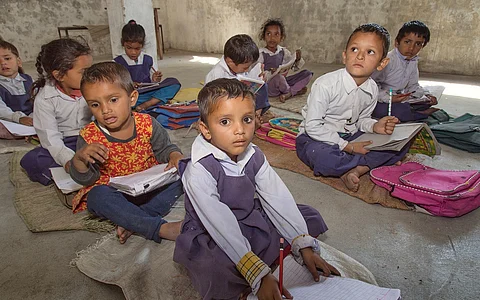

At least one in seven students had their schooling disrupted due to climate hazards in 2024, according to a new report.
The report, Learning Interrupted: Global Snapshot of Climate-Related School Disruptions in 2024, was released by the United Nations children’s agency UNICEF on January 24, 2025, the International Day of Education.
According to the report, globally, at least 242 million students from pre-primary to upper secondary education have experienced school disruptions due to climate events in 2024.
The 242 million figure is a conservative estimate due to data limitations, noted the report.
The UN report presented an analysis of country-specific school disruptions caused by climate hazards in 85 countries from January to December 2024.
The report identified 119 climate hazards that led to school disruptions.
This analysis defined ‘school disruption’, as any event that leads to a suspension of regular school activities. This includes school closures, changes in school timetables that result in shortened schooling hours, advancement of the start of vacation (preponing), delay in the reopening of schools (postponing), or the destruction of schools or classrooms due to climate-related hazards.
Heat waves caused the most disruptions, impacting at least 171 million children as per the report.
Over 118 million students were impacted in April alone, followed by substantial disruptions in May, June and July.
In April, nationwide school disruptions in Bangladesh, Cambodia, and the Philippines disrupted schooling for over 63 million children. In the East Asia and the Pacific region, countries such as Malaysia and Thailand reported heat wave-induced school closures, though data on the exact number of students affected are unavailable.
Tropical cyclones affected 18 million students in September, with frequent occurrences in subsequent months, notably in October and December. Storms and floods also played a significant role in school disruptions, particularly in March and November.
Droughts, often linked to El Nino conditions, had long-term impacts on children’s education.
In 2024, countries in Southern Africa experienced the worst drought in over 100 years due to the impacts of El Nino. In Zimbabwe, prolonged drought impacted schooling for 1.8 million children in 2024.
In 2024, climate-related school disruptions varied significantly across regions, each facing unique challenges due to specific climate hazards.
South Asia was the most affected region in 2024 with 127,845,148 students affected by climate-related school disruptions, with heat waves as the leading climate hazard in terms of both frequency and impact, the report noted.
The majority, 54 million, were in India. Most of them were hit by heat waves, which also affected 35 million in Bangladesh.
In East Asia and the Pacific, 50 million students experienced school disruptions due to climate hazards, with heat waves being the leading cause.
Latin America and the Caribbean saw significant school disruptions due to a combination of heat waves, floods, storms, and cyclones, impacting 30 million students.
The Middle East and North Africa experienced school disruptions caused by storms and floods, affecting more than eight million students.
West and Central Africa, and Eastern and Southern Africa primarily experienced flood-related disruptions, impacting 12 million and 8 million students, respectively.
“Children are more vulnerable to the impacts of weather-related crises, including stronger and more frequent heat waves, storms, droughts and flooding,” said UNICEF Executive Director Catherine Russell.
Nearly half the world’s children, approximately 1 billion children live in countries with extremely high risks of climate and environmental shocks.